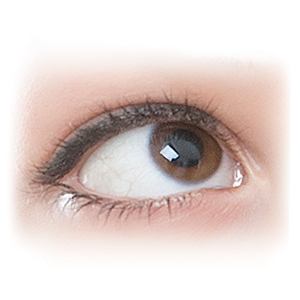 This time of year, many of us are keeping our eyes on our New Year’s resolutions. I can’t help you with that one (sorry!), but I do know a thing or two about eyes. Working alongside doctors, medical experts, and other nurses for nearly thirty years at a facility that specializes in vision care and eye health, among other things, the insight I’ve gleaned into taking care of our peepers could fill a website easily. Instead, I’ll address a few long-standing eye myths right here.
This time of year, many of us are keeping our eyes on our New Year’s resolutions. I can’t help you with that one (sorry!), but I do know a thing or two about eyes. Working alongside doctors, medical experts, and other nurses for nearly thirty years at a facility that specializes in vision care and eye health, among other things, the insight I’ve gleaned into taking care of our peepers could fill a website easily. Instead, I’ll address a few long-standing eye myths right here.
1. Sitting too close to the TV will harm your eyes.
This may have been true when television sets emitted low levels of radiation, but scientists agree that Mom’s age-old warning is out of date. Although my husband says he feels safer sitting across the room from the 60-inch TV.
2. Reading in low light will harm your eyes.
No matter how large or small the print, no matter how dark the room, no permanent damage will occur. You may have some temporary strain, but you will survive (as will your vision!) To defy your parents another day.
3. Only children can get pink eye.
Conjunctivitis, or pink eye, is a common, and usually easily treated condition in children and adults. It can be caused by viruses or bacteria, or irritants like smog, chemicals, and Richmond’s all-time favorite irritant: pollen! The inflammation is what gives the eye a pink or reddish color. The treatment depends on the cause. Sometimes it gets better on its own. However, it may need an antibiotic or other medical treatment to resolve. See your doctor if you have moderate to severe pain, blurred vision, or if symptoms do not improve on their own, or get worse after a couple of days. Pink eye that is caused by virus or bacteria is very easy to spread. Use clean pillowcases and towels until the infection clears. And although it might be tough, try not to touch your eyes. And, of course, remember to wash your hands often. (You knew I’d sneak that in here somewhere!)
4. Daily usage of over-the-counter eye drops and Visine-type products is harmless.
Unfortunately, overuse of these drops can actually bring about the conditions that they are trying to correct. Rebound redness is a side effect of overuse resulting in a cycle of dependency and misuse without eliminating the cause of the redness. Some drops containing naphazoline can cause dizziness, headache, nausea, weakness, nervousness and possible slowing of the heart. Which means, sometimes, you may be better off just keeping the red in.
5. I won’t get a cataract; i have perfect vision.
My sources say, if you live long enough, you will get a cataract. Cataract formation is the yellowing of the natural lens in your eye that occurs over time. While some things may encourage earlier yellowing such as trauma, diabetes, and genetics, eventually all lenses will yellow. If that yellowing prevents you from doing the things you enjoy or need to do, it is time to see an ophthalmologist – regardless of your age.
6. Children with crossed eyes will grow out of it.
Children with lazy or crossed eyes require intervention. In fact, believing this myth to be accurate could cause permanent damage. The cells responsible for three-dimensional images must be stimulated early on or they will not develop. If a parent or caretaker feels that a child has a crossed eye, it is absolutely essential to consult an ophthalmologist. Treatment may include wearing a patch, eyeglasses, surgery, or a combination of these methods. It’s important to explore options for the child’s long-term health.
Remember, the eye is more like a camera than a muscle. It won’t wear out or improve with exercise, but it does need to be cared for and protected. There’s nothing mythical about that!



